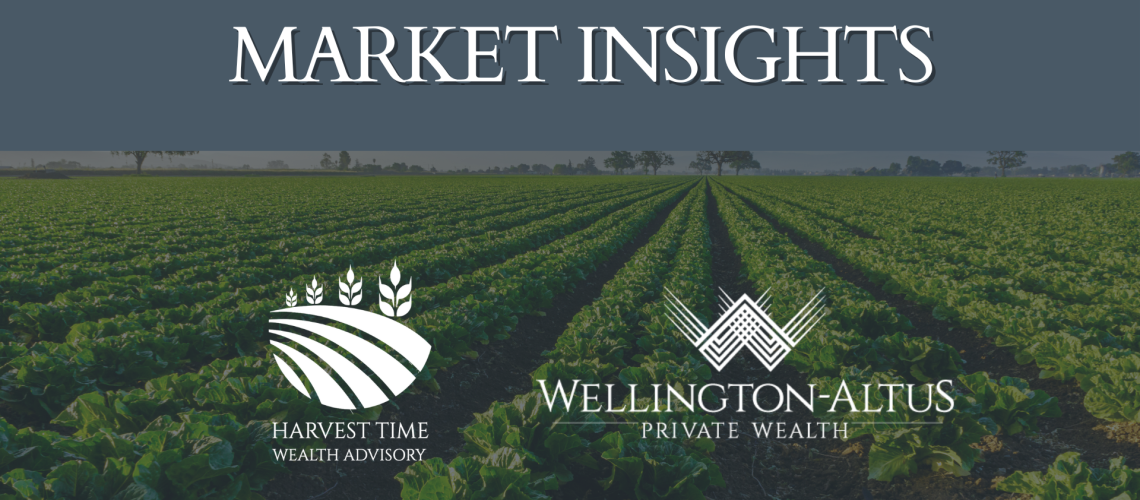Now is the Time of Monsters
 We are at a pivotal moment in history, one that former U.S. Federal Reserve Chairman Alan Greenspan might liken to a historical juncture, where the intertwined narratives obscure the uniqueness of our era. As we contend with a world that echoes the tumult of epics like War and Peace or Game of Thrones, we are in the midst of a “Fourth Turning”—a period of intense demographic, technological, and structural change that recurs approximately every 80 years.
We are at a pivotal moment in history, one that former U.S. Federal Reserve Chairman Alan Greenspan might liken to a historical juncture, where the intertwined narratives obscure the uniqueness of our era. As we contend with a world that echoes the tumult of epics like War and Peace or Game of Thrones, we are in the midst of a “Fourth Turning”—a period of intense demographic, technological, and structural change that recurs approximately every 80 years.
Greenspan’s warnings of “irrational exuberance” resonate in today’s climate of innovation and speculation. Assessing asset values in these times is challenging, especially with the potential for prolonged contractions, as seen in Japan’s lost decade. His insights are vital as we face an economic mirage sustained by deficit spending, which may offer a semblance of growth but ultimately series to impede it, luring investors into regrettable cycles following ephemeral rallies.
” There are no heroes; in life, the monsters win.
– Sansa Stark, Game of Thrones”
For more insights from Dr. James Thorne, please visit wellington-altus.ca/market-insights You can also follow Dr. James Thorne on LinkedIn and X.
Seismic shifts are reshaping our global financial landscape. Debt has climbed to levels not seen since the Second World War, sparking a re-evaluation of the Bretton Woods system1. In these times of transformation, Italian philosopher Antonio Gramsci’s words resonate, “The old world is dying, and the new world struggles to be born; now is the time of monsters.” This reflects the uncertainty surrounding traditional financial structures, stirring debates on “de-dollarization” and the exploration of alternatives to the U.S. dollar as the reserve currency of choice.
As we venture into uncharted territory, the spectres of uncertainty emerge, embodying the unpredictable essence of this transition. Often, we are misled to believe that Bitcoin and artificial intelligence (AI) are monstrous entities that threaten the established order. As I have reiterated on numerous occasions, risk is inherent. Investors face the peril of failing to acknowledge that throughout history, groundbreaking innovations have been unfairly branded as monsters.
The world is facing a critical juncture, which mirrors past historical turning points. As we navigate the Fourth Turning, characterized by seismic shifts in the global financial landscape, we must address the challenges and opportunities presented by emerging technologies like AI and Bitcoin, while acknowledging the risk embodied in our extreme levels of debt. Yes, the current global economy is reminiscent of an installment of Game of Thrones.
We’ve Seen This Before
Central to this transition period is the need to manage debt levels, which have reached historic highs, and the potential impact on the global financial system. As the world reevaluates the role of the U.S. dollar as a reserve currency, the appeal of safe havens such as gold and Bitcoin intensifies. This period presents critical questions about our economic future and offers astute investors a chance to profit from these generational changes.
AI and Bitcoin represent beacons of innovation, signaling a technological renaissance reminiscent of the transformative breakthroughs of past decades that have reshaped the global economy. Investors must acknowledge the progressive impact of AI and Bitcoin on the economy—the launch of ChatGPT-4 is just the beginning of this journey.
Current computing and internet infrastructure traces back to the late 1940s and 1950s, and the introduction of a digital currency was first proposed by American economist and statistician Milton Friedman in the 1990s. Today, we are witnessing Bitcoin’s evolution into a traditional store of value and asset class, despite being controversially labelled a “monster” by many.
The roots of AI can be traced back to the 1930s when American mathematician, electrical engineer and computer scientist, Claude Shannon introduced the concept of machine learning. Nearly a century later, the introduction of ChatGPT, a large language model, is the catalyzing force that unleashed this innovation that will reshape the world. In line with any major theme, capital tends to initially flow into foundational elements; for AI, companies like NVIDIA have set the benchmark. However, themes evolve over time.
A typical evolutionary process for high-tech innovation goes through several stages. The ‘infrastructure’ phase will shed light on fundamental components of AI development, such as semiconductor firms, cloud services, and data centres. Subsequently, the ‘revenues’ phase will showcase businesses utilizing AI for expansion, particularly in software and IT services. Finally, the ‘productivity gains’ phase will exhibit how AI can enhance efficiency across various industries, potentially revolutionizing labour intensive sectors ripe for automation.
Just as the printing press, which challenged existing power structures and ways of disseminating information, was once labelled a “monster” by those wary of its disruptive potential to the established order, Bitcoin and AI now find themselves facing similar scrutiny for their potential to reshape our economic and societal landscapes. As Antonio Gramsci’s quote suggests, periods of significant change often give rise to fear and skepticism, with new innovations being viewed as monstrous before they are fully understood and integrated into the fabric of society.
With the resurgence of populism, staggering global debt, China’s evolution, the rapid advancement of AI, and the growing acceptance of Bitcoin, the “monsters” of today are increasingly woven into various sectors, setting the stage for a significant transformational era.
Bubbles and Greenspan’s Philosophy
Greenspan’s philosophy that central banks should “respond patiently and responsibly” to market and economic shifts offers a perspective on our current technological wave reminiscent of other eras that preceded secular bull markets—and speculative bubbles. The full implications of today’s advancements are still unfolding. Moreover, as Greenspan states, monetary policy works with a lag, and central bankers need to be forward looking—a skill they currently seem to have lost:
“Because monetary policy works with a lag, we need to be forward looking, taking actions to forestall imbalances that may not be visible for many months. There is no alternative to basing actions on forecasts, at least implicitly. It means that often we need to tighten or ease before the need for action is evident to the public at large, and that policy may have to reverse course from time to time as the underlying forces acting on the economy shift. This process is not easy to get right at all times, and it is often difficult to convey to the American people, whose support is essential to our mission.”2
We face fiscal policies characterized by wartime spending levels, driving inflation that seems resistant to traditional remedies like interest rate hikes. With refinancing needs for debt obligations and interest payments in countries like Canada and the U.S. consuming significant portions of budgets, the recklessness of such policies becomes apparent. It suggests we may be witnessing the end of an era of extreme progressivism in fiscal policy, as indicated by the potential missteps of modern monetary theory.
The private sector, laden with decades of debt, faces a moment of truth. The illusion of perpetual “free lunches” fades as we confront the reality of austerity and the prospect of higher taxation. Central banks’ aggressive rate hikes, while aimed at curbing inflation, risk precipitating a credit crisis and causing undue harm to sectors not responsible for inflationary pressures. Greenspan emphasized the importance of central banks acting with foresight to anticipate and mitigate imbalances that may not become apparent for months.
Recalling the pre-COVID-19 world and the drastic adjustments that ensued, we yearn for growth above two per cent and controlled inflation—objectives that remain tantalizing, yet elusive. Past monetary policies left us in a liquidity trap, where growth was hampered by excessive debt, and concerns about western economies mirroring Japan’s stagnation loomed large. Now the shoe is on the other foot, with liberal fiscal policies and rising debt.
The forces of deflation and secular stagnation— propelled by debt, digitization, demographics, and globalization—are intensifying. We see declining birth rates and an aging populace. The cessation of extreme fiscal policies could mirror post-wartime economic transitions of the past, historically associated with negative growth impacts.
Internationally, China’s era of debt-driven growth, not unlike Japan’s in the past, seems to be waning. This will likely have significant ramifications for economies like Canada, which became dependent on sectors tied to China’s former growth model. Canada must also navigate domestic policy effects on its real estate market and its stance on commodity markets. As Canadian investors witness tensions between the Bank of Canada and Prime Minister Justin Trudeau’s government, the cautionary signals for foreign investment become increasingly evident, necessitating a judicious reassessment and strategy.
Populism’s rise post-2008 Global Financial Crisis and the persistent swell of income inequality add further risks to global stability. Japan has ended its era of negative interest rates. Europe’s struggle with debt and the profound repercussions of the Russia-Ukraine conflict add complexity to an already intricate global economic tapestry.
2 Remarks by Chairman Alan Greenspan, At the Annual Dinner and Francis Boyer Lecture of The American Institute for Public Policy Research, Washington, D. C. December 1996. “The Challenge of Central Banking in a Democratic Society”.
What Should Investors Do?
As we navigate these turbulent times, it is crucial to remain vigilant and adaptable, embracing the transformative potential of AI and Bitcoin while carefully managing the risks associated with debt and speculative bubbles. By doing so, we can position ourselves to thrive in the face of the “monsters” that will shape our economic future.
Secular growth is a beacon in our navigation of this complex landscape. As central bankers realign their strategies— taking a page out of Greenspan’s book—we expect a transition towards rate cuts to foster growth once inflation seems tamed. The notion that the global economy can sustain higher interest rates is, in my mind, a fallacy. With global debt awaiting refinancing, the short end of the yield curve appeals more for investment. We find ourselves in a reflation cycle set to run until the end of 2025.
However, caution is warranted as cyclical stocks appear overextended. Oil is likely to oscillate between $70 and $90, much to investors’ chagrin. As AI’s economic influence expands, its impact on equities will follow suit. Both gold and Bitcoin are expected to rally, while high quality banks seem to have reached their pricing zenith. The full ramifications of the commercial real estate crisis remain uncertain, casting a shadow over investments in regional banks. The excessive cash levels in money market funds indicate a market still underweight in equities. My preference leans towards U.S. secular growth names, particularly the NASDAQ-100, and I anticipate a ‘risk on’ rally extending to the end of 2025, in line with the political cycle.
As rate cuts begin, we’re likely to see a rekindling of interest in risk assets, with a preference for the large U.S. indices over Canada’s commodity-heavy S&P/ TSX Composite Index. Nevertheless, certain Canadian companies stand to benefit significantly from the burgeoning technological wave, despite the index’s heavy slant towards banks and energy.
Peering into the future, we project a downward shift in interest rates by the end of 2025, with the federal funds rate and the Bank of Canada’s overnight rate potentially aligning at around 2.5%. Yet, historical patterns suggest the risk of a dip below the two per cent mark. With the private sector teetering on the brink of recession, our targets for the S&P 500 are set at 5,400 for 2024 and 6,000 the following year.
Investors should remain alert to any signs of “irrational exuberance,” which could temporarily skew market perceptions. In such instances, it might be prudent to adopt a defensive stance, consolidate holdings, and raise cash. Greenspan’s insights underscore the necessity of responding to economic cycles with both foresight and agility in this era of complexity and transformation. As we navigate these changes, let us heed the lessons from the internet bubble of the 1990s and remember, as Sansa Stark poignantly observed in Game of Thrones, “The monsters always win,” a metaphor for the relentless nature of innovation and economic evolution.
The information contained herein has been provided for information purposes only. The information has been drawn from sources believed to be reliable. Graphs, charts and other numbers are used for illustrative purposes only and do not reflect future values or future performance of any investment. The information does not provide financial, legal, tax or investment advice. Particular investment, tax, or trading strategies should be evaluated relative to each individual’s objectives and risk tolerance. This does not constitute a recommendation or solicitation to buy or sell securities of any kind. Market conditions may change which may impact the information contained in this document. Wellington-Altus Financial Inc. (Wellington-Altus) is the parent company to Wellington-Altus Private Wealth Inc. (WAPW), Wellington-Altus Private Counsel Inc. (WAPC), Wellington-Altus Insurance Inc. (WAII), Wellington-Altus Group Solutions Inc. (WAGS), and Wellington-Altus USA Inc. Wellington-Altus (WA) does not guarantee the accuracy or completeness of the information contained herein, nor does WA assume any liability for any loss that may result from the reliance by any person upon any such information or opinions. Before acting on any of the above, please contact your financial advisor.
©2024, Wellington-Altus Private Wealth Inc., Wellington-Altus Private Counsel Inc., Wellington-Altus Insurance Inc., Wellington-Altus Group Solutions Inc., and Wellington-Altus USA Inc. ALL RIGHTS RESERVED. NO USE OR REPRODUCTION WITHOUT PERMISSION. www.wellington-altus.ca.


